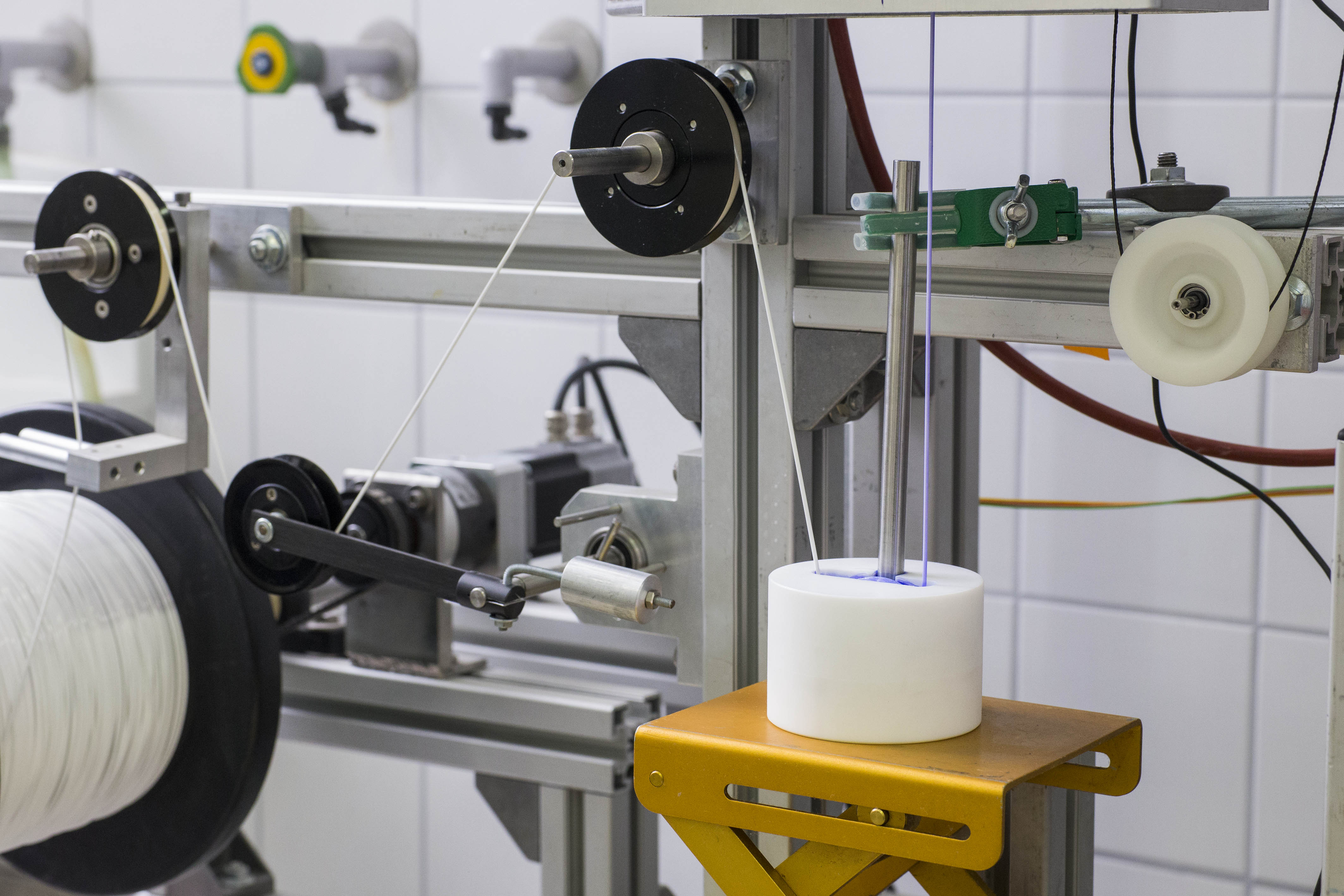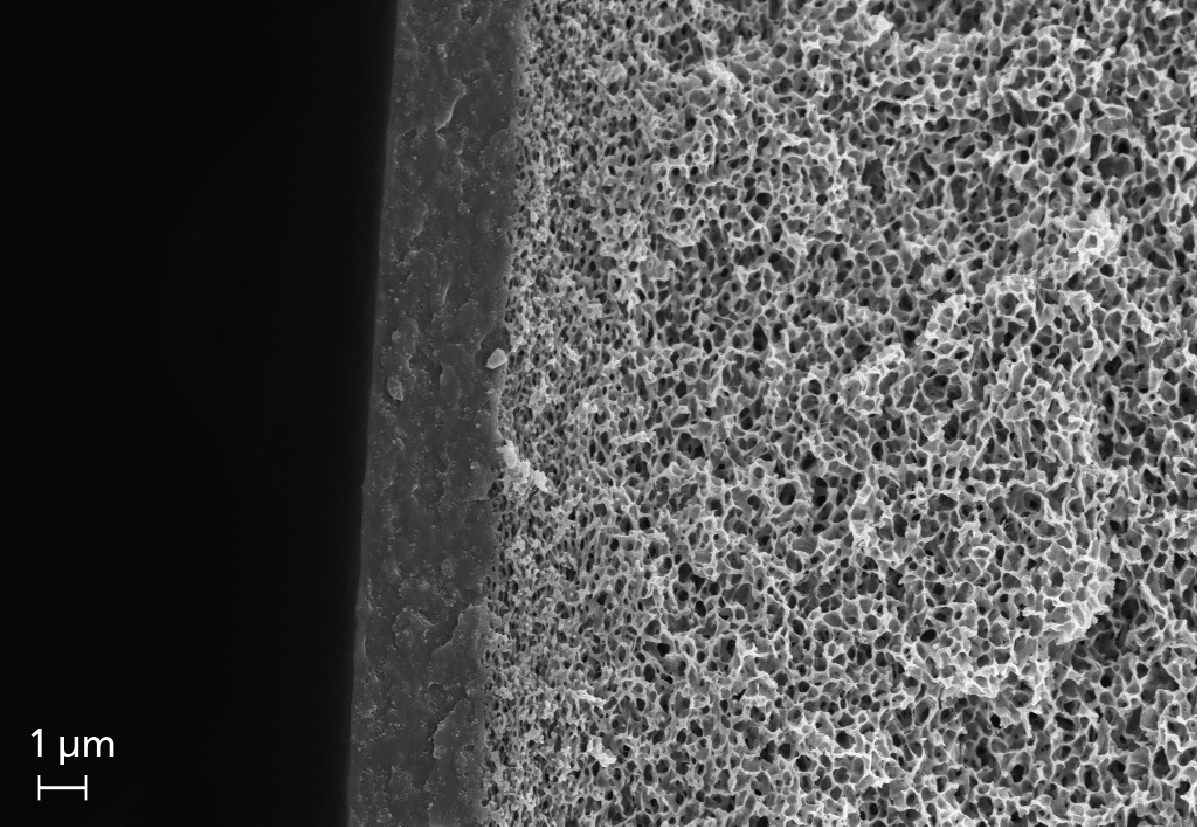The industrial use of technical separation membranes has so far been limited mainly to liquid filtration. The main reasons for this are insufficient separation properties and the high cost of the membranes. But, due to their inherent energy efficiency, membranes offer enormous potential for the separation of gases mixtures.
Using microporous framework compounds (zeolites, metal-organic-frameworks (MOFs)), which have defined pore sizes and are thus suitable for the separation of gas molecules by size, we have developed mixed-matrix membranes that have great potential for gas separation.
For this purpose, porous PVDF hollow fiber membranes were coated with appropriate polymer dispersions by dip coating. The viscosity of the dispersion and the coating speed were used to control the thickness of the mixed-matrix layer in the range from 500 nm to 5 µm. By controlling the layer thickness, only small amounts of material are required for the coating. The use of nanoparticulate framework compounds (< 100 nm) is crucial for the quality of the coatings.
The mixed-matrix membranes show improved separation properties compared to pure polymer coatings. For example, the water vapor permeability of polyvinyl alcohol coatings could be increased by almost 100% to 7000 barrers by adding SAPO-34 particles. By selecting suitable polymer-MOF combinations, the separation properties of the membranes can be adapted to other separation challenges.
 Fraunhofer Institute for Interfacial Engineering and Biotechnology IGB
Fraunhofer Institute for Interfacial Engineering and Biotechnology IGB
